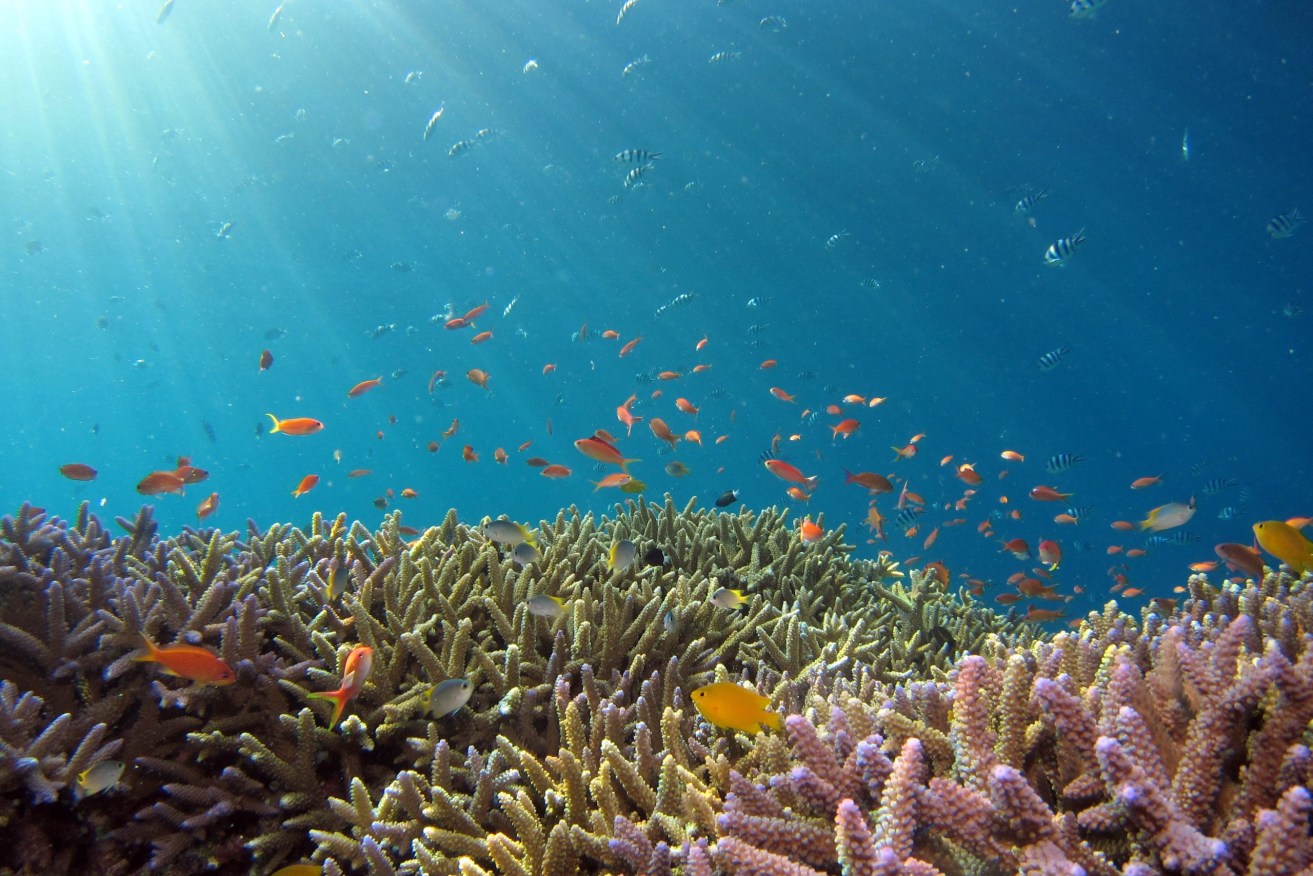Dying by degrees: Even coral ‘safe havens’ face deadly temperature rise
Coral reef “safe havens” along Queensland’s coastline that have so far been protected by “exceptional cooling conditions” are predicted to suffer a near-total wipe out in the face of rising temperatures, new global reef mapping shows.


Even "safe haven" parts of the Great Barrier Reef are threatened by current levels of ocean temperature rises, a new study has found. (Photo: James Cook University)
The new research using the most detailed projections on daily sea surface temperatures around the world, found even the most protected reefs including the Great Barrier Reef will be left with nowhere to hide from bleaching.
The study found 84 percent of the world’s coral reefs currently lie in what is called thermal refugia, or safe haven pockets that protect reefs by buffering coral from the effects of warming seas.
Significant areas of the Great Barrier Reef are classified as living in thermal refugia.
However, the modelling published today in the PLOS Climate journal shows that if temperatures rise 1.5 degrees Celsius above pre-industrial levels, thermal refugia would be decimated, leaving just 0.2 per cent of the world’s reefs protected.
Study co-author Scott Heron, Associate Professor at James Cook University, said temperatures were currently 1.1 degrees Celsius above pre-industrial levels and predicted to hit 1.5 degrees in the 2030s.
“The overwhelming majority of coral reef locations around the world in recent history have been thermal refugia, and the frequency of heat stress they’ve experienced has been less than once every 10 years,” Heron said.
“Under the analysis that we’ve done with 1.5 degree Celsius climate warming, we see that change from 84 per cent of reefs being refuges from thermal stress to only one fifth of one percent of reefs being protected.”
Heron said that figure would drop even further, to a “catastrophic loss of coral reefs”, if temperatures rose by 2.0 degrees.
He said parts of the Great Barrier Reef, currently “on the cusp” of a new bleaching event, would be decimated.
“There are some exceptional places where there is some mechanism – cool water coming up from the deep ocean to the corals near the surface, or strong currents that are mixing the waters from down deep together with the waters from the surface – that mean the temperatures that corals experience don’t meet that stressful limit,” Heron said.
“But more reef locations are going to be exposed to these heat stress events more frequently and with increasing intensity. There will just be no refuge for the reefs.”
Heron said unless cooling conditions arrived in February, parts of the Great Barrier Reef would suffer another bleaching. Bleaching already hit the Great Barrier Reef in 2016, 2017, and 2020.
“We are all anxiously waiting monsoonal cloud events coming through and whether we will be seeing rainfall that can cool the water off around the corals,” Heron said.
“We’re not locked into a bleaching event, but we’re at the point of relying upon a release valve in the form of weather to avert what could otherwise be a potential bleaching event.
“Every day counts at this point. When we look at the weather forecasts along the Queensland coast, we’re looking for rain and cloud. Clear sunny days are not what we are hoping for.”












